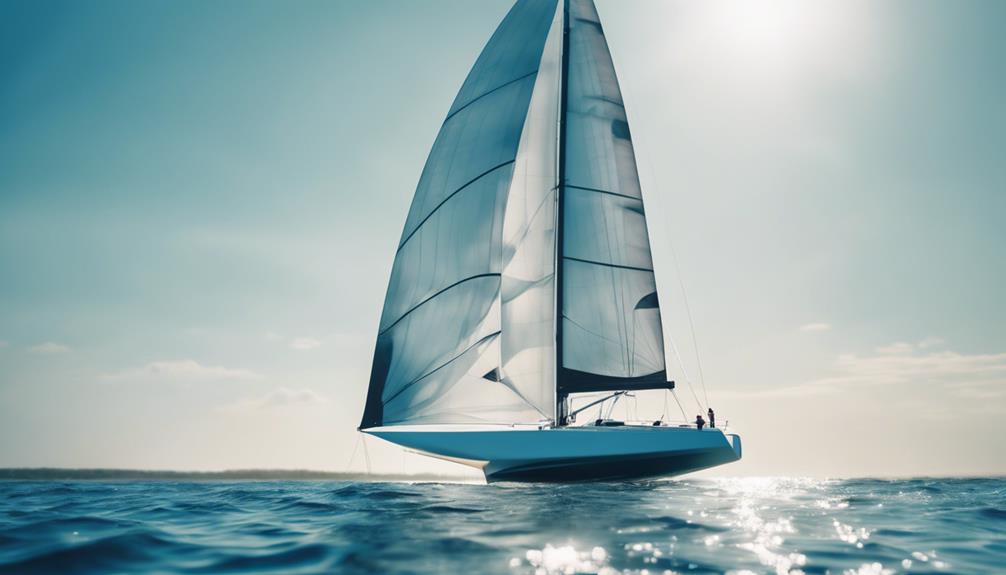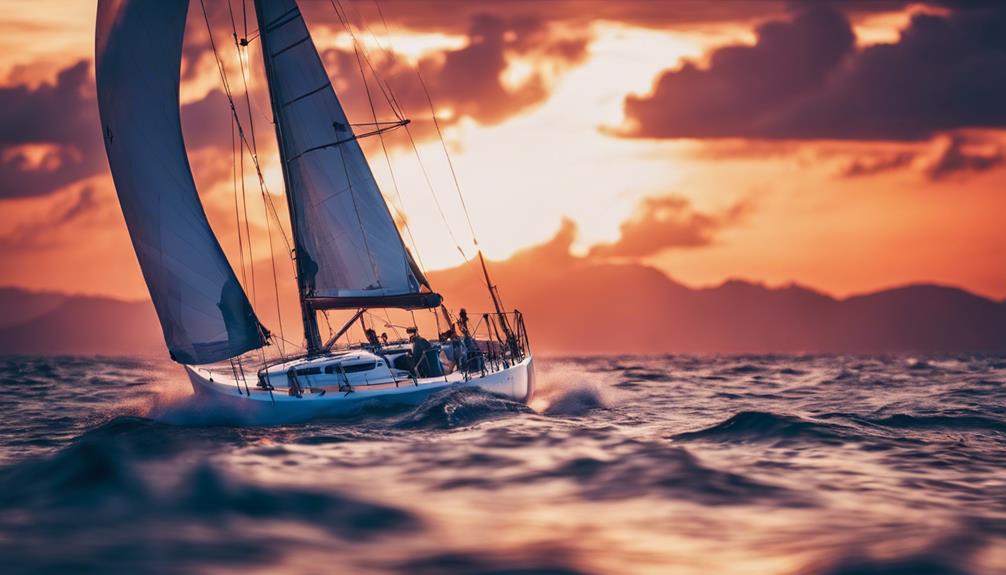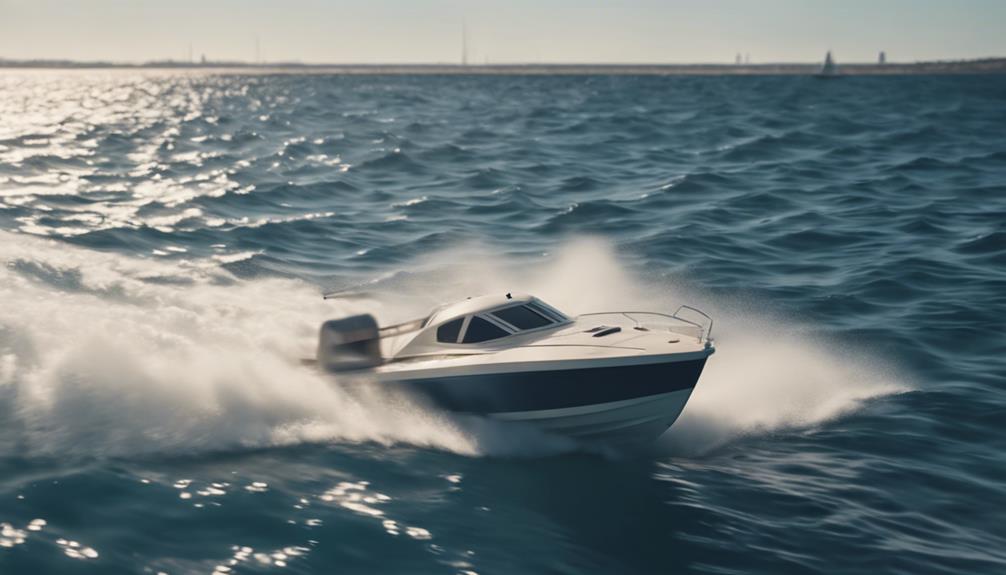If you're looking to understand the fastest sailboat designs, you're in for a treat. Innovations like Syroco's kite and hydrofoil wings mimic a shark's shape to reduce drag, while SP80 uses unique super-ventilating foils to tackle cavitation challenges. Vestas Sailrocket II currently holds the world record at 65.45 knots, but teams like SP80 and Syroco are aiming for speeds over 80 knots. Each design reflects cutting-edge technology driven by aerodynamics and fluid physics. The future of sailing speed is bright, and there's a lot more to explore about these thrilling advancements.
Key Takeaways
- The current record for sailing speed is held by Vestas Sailrocket II at 65.45 knots, showcasing the pinnacle of nautical speed innovation.
- Innovations like Syroco's shark-shaped hydrofoil design and SP80's surface-piercing foils are crucial for enhancing speed and stability.
- Advances in hydrofoil technology have allowed vessels like L'Hydroptère to achieve speeds over 51 knots, demonstrating significant progress in sailing engineering.
- The pursuit of breaking the 80-knot barrier is driving collaboration and community engagement among teams like SP80 and Syroco.
Historical Context of Speed Records
Since the first sailing speed record was set in 1972, the quest for faster speeds has driven innovations in sailboat design and technology. You might recall that Tim Colman's Crossbow kicked off this competitive journey with a modest 26.30 knots.
From there, the world sailing speed record saw remarkable improvements. By 1993, the Yellow Pages catamaran pushed the speed to 46.52 knots, nearly averaging a 1-knot increase each year.
However, after a period of stagnation, the tide turned again in 2009 when Alain Thébault's L'Hydroptère achieved 51.36 knots, showcasing significant advancements in hydrofoil technology.
But it was Paul Larsen's groundbreaking Vestas Sailrocket II in 2012 that truly redefined the limits of sailing speed, reaching an astonishing 65.45 knots. This record still stands today, inspiring new challengers like Syroco and SP80, who aim to exceed 80 knots.
These milestones haven't only filled the record books but also highlighted the critical role of innovations in sailboat design, paving the way for future breakthroughs in speed and efficiency on the water.
Current Record Holders

Paul Larsen's Vestas Sailrocket II remains the reigning champion of speed sailing, having set the current world record of 65.45 knots in 2012. This remarkable achievement not only secured the outright sailing speed record but also showcased the engineering prowess behind its design. In the same year, Vestas Sailrocket II recorded the highest instantaneous speed of 68.33 knots, further establishing itself as a leader in speed sailing.
However, the quest for speed doesn't stop there. The competition is heating up with challengers like the SP80 team, who aim to push the boundaries of sailing even further, targeting speeds of 81 knots and beyond. Their innovation reflects the growing interest in maximizing performance through cutting-edge design.
Additionally, Alain Thébault's Hydroptère set a D Class record of 51.36 knots in 2009, highlighting the potential of hydrofoil technology. Meanwhile, kitesurfing records, like those achieved by Alex Caizergues reaching 100 km/h, remind you of the competitive spirit that fuels advancements across various watercraft.
The world speed sailing record is constantly evolving, driven by those determined to redefine what's possible on the water.
Innovative Designs and Technologies
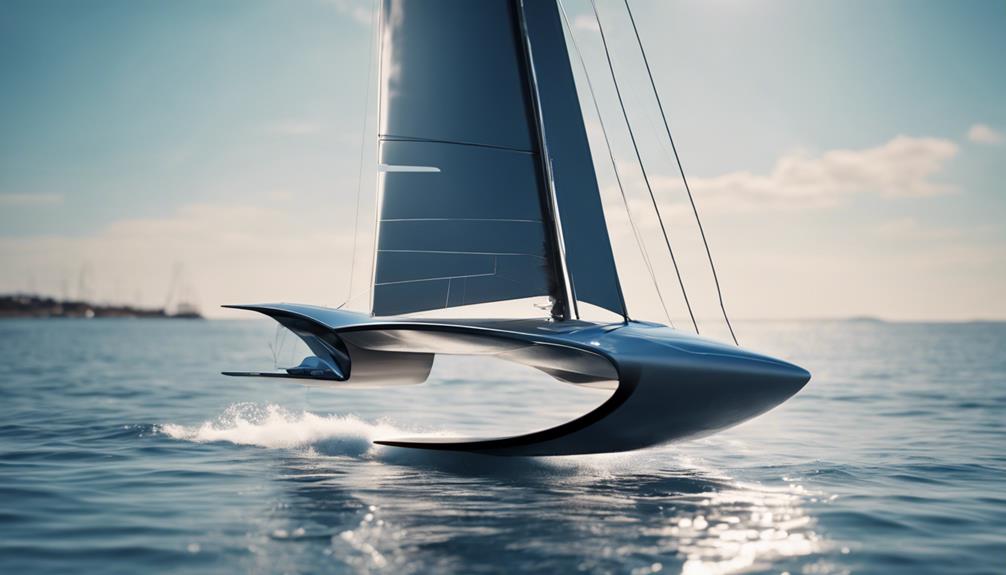
Innovative designs and technologies are reshaping the future of speed sailing, pushing the boundaries of what's possible on the water. You're witnessing a revolution where the fastest ever sailboats, like Syroco and SP80, incorporate cutting-edge features to break speed records.
Syroco's design utilizes a kite connected to a hydrofoil wing, allowing the hull to mimic a shark shape, greatly reducing drag by lifting it above the water. Meanwhile, SP80 boasts a sleek 10.5-meter trimaran design that uses super-ventilating surface-piercing foils to enhance both speed and stability.
The focus on aerodynamics and fluid physics is essential in both projects. By employing supercavitation techniques, Syroco minimizes friction, while SP80 implements automatic balance adjustments for superior control. These innovative designs not only aim to conquer cavitation challenges but also prioritize performance optimization.
Collaboration with experts in marine technology and the use of data analytics help refine these advancements, ensuring continual improvements in sailing performance. As you explore these innovations, you'll see how technology and design are setting new benchmarks in the quest for ultimate speed on the water.
Speed Challenges and Solutions
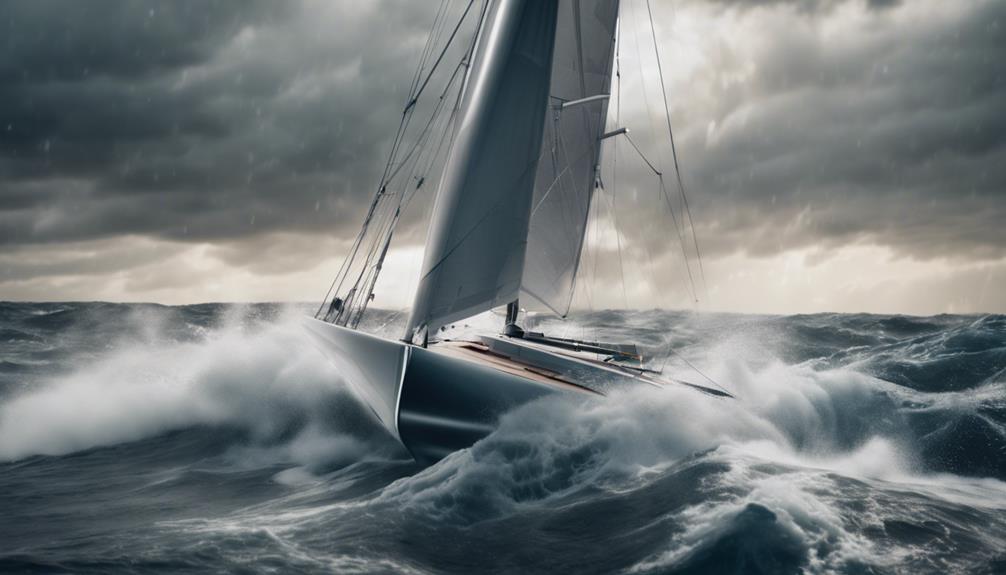
Speed sailing faces significant challenges, particularly with the issue of cavitation, which can hinder performance and efficiency. Hydrofoils, while vital for achieving high-speed sailing, are limited to around 100 km/h (62 mph) due to cavitation, creating high and low-pressure zones that increase drag.
Both SP80 and Syroco are tackling these challenges through innovative engineering solutions. SP80 employs a super-ventilating surface piercing foil designed to minimize cavitation effects, while Syroco's design features a flexible high-tension line that connects its hull and hydrofoil to maintain stability at increased speeds.
The performance of these vessels is also highly dependent on testing conditions, such as wind strength and water surface flatness. To reach extraordinary speeds of 81 knots (93 mph/150 km/h), meticulous tuning is essential. You'll need to optimize the alignment of the kite and hydrofoil to generate maximum drive force.
Control Mechanisms and Safety
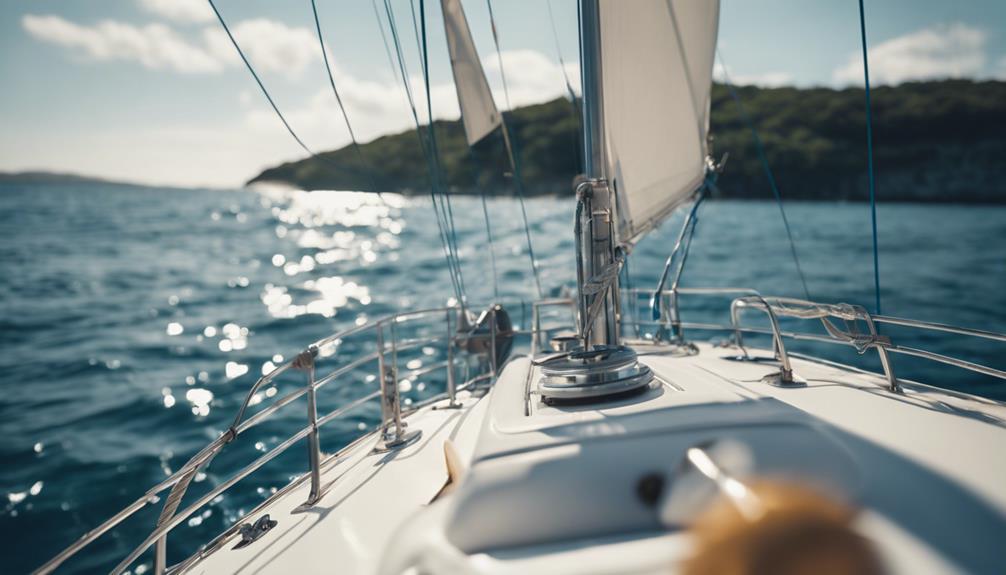
Effective control mechanisms and robust safety features are essential for steering through the challenges of high-speed sailing. When you're pushing the limits of speed with designs like the SP80, having the right tools can make all the difference.
Here are three key innovations that enhance both control and safety:
- Automatic Balance Adjustments: The SP80 employs a mechanical power module that automatically adjusts balance, allowing you to focus on steering and managing kite power.
- Enhanced Safety Features: The Vestas Sailrocket includes a Kevlar cockpit, six-point harness, and F1-inspired seating, providing crucial protection during high-speed runs.
- Emergency Support: Diver assistance is available for emergency situations, underscoring the significance of safety in high-speed hydrofoil sailing.
In the quest for speed, maintaining super-cavitation stability is critical. This prevents air from disrupting vapor bubbles around the hydrofoil, ensuring optimal control.
Innovations like automatic release mechanisms in the Sailrocket validate their designs for exceeding cavitation limits. With these advancements, you can enjoy the thrill of high-speed sailing while prioritizing both control and safety.
Team Dynamics and Community Engagement
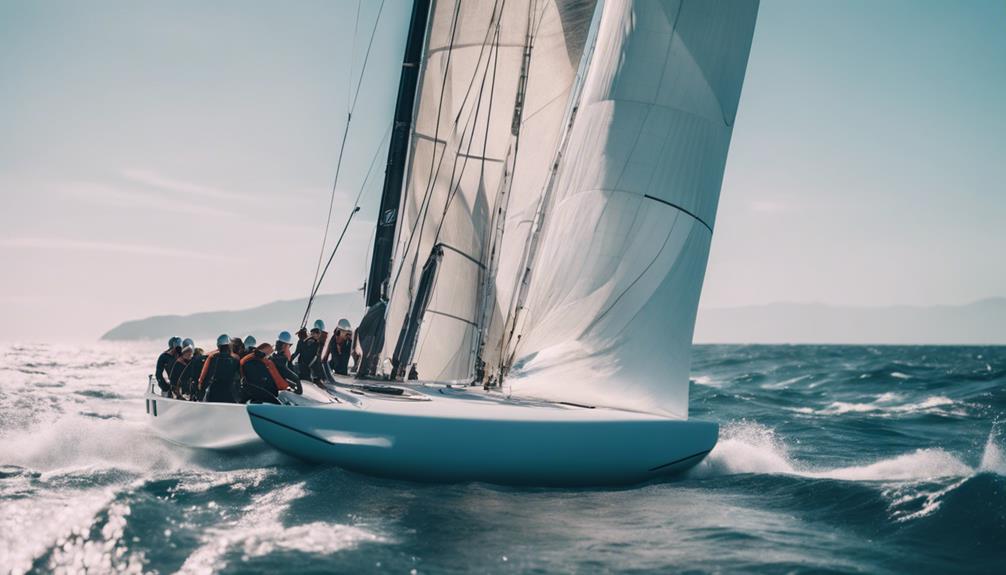
The rivalry between SP80 and Syroco not only fuels fierce competition but also galvanizes their communities, drawing in enthusiasts keen to witness the evolution of sailing technology. Both teams showcase exemplary team dynamics, uniting extreme sports athletes, tech entrepreneurs, and financiers. This collaboration fosters innovation and drives the pursuit of speed sailing records that excite fans worldwide.
Here's a glimpse of how community engagement and team dynamics play a pivotal role:
| Team | Key Figures | Community Engagement Initiatives |
|---|---|---|
| SP80 | Graduates from EPFL | Workshops and open house events |
| Syroco | Alex Caizergues | Public demos and live streaming |
| Rivalry | Brothers in competition | Social media engagement campaigns |
| Innovation | Tech advancements | Collaborative projects with schools |
| Extreme Sports | Athlete showcases | Sponsorship and mentorship programs |
As you explore these dynamics, you'll see how both teams inspire a culture of collaboration and knowledge sharing. This vibrant community not only supports their favorite teams but also contributes to rapid advancements in sailing technology, pushing the boundaries of what's possible on water.
Future of Nautical Speed Innovations

Pushing the boundaries of nautical speed innovations, teams like Syroco and SP80 are redefining what's possible in wind-powered sailing technology. With a shared goal of breaking the 80-knot (150 km/h) speed barrier, these teams are at the forefront of engineering excellence. Their efforts not only aim for a new World Speed Record but also highlight the significance of sustainable practices in maritime engineering.
Here are three key innovations you should know about:
- Syroco's Hydrofoil and Kite System: This design addresses cavitation challenges, enhancing speed while maintaining stability.
- SP80's Super-Ventilating Surface Piercing Foil: This unique foil boosts performance and emphasizes sustainable construction methods.
- Data-Driven Optimization: Both teams utilize advanced data analytics and collaborate with experts to refine their designs, focusing on aerodynamics and fluid physics.
The successful breaking of the 80-knot target could revolutionize sailing technology, drawing increased interest and investment into competitive sailing and maritime engineering advancements.
As these innovations unfold, you'll witness a new era in wind-powered sailing that merges speed, sustainability, and cutting-edge technology.
Frequently Asked Questions
What Are the Fastest Sail Boat Designs?
You'll find the fastest sailboat designs focus on hydrofoils and advanced aerodynamic shapes. Boats like the Vestas Sailrocket II and SP80 push boundaries, aiming for speeds beyond 80 knots through innovative engineering and cutting-edge materials.
What Is the Best Sail Design for Speed?
You'll find the best sail design for speed combines a high-aspect ratio, lightweight materials, and advanced aerodynamics. By adjusting your sail trim to wind conditions, you can maximize lift and minimize drag effectively.
What Is the Fastest Sail Craft?
The fastest sail craft, as of now, is the Vestas Sailrocket II, which reached an incredible 65.45 knots. You'll find innovative projects like Syroco and SP80 aiming to break that record soon.
What Is the Fastest Sail Configuration?
The fastest sail configuration combines high-aspect ratio sails with hydrofoils, maximizing lift and minimizing drag. You'll find that rigid wing sails and kite sails also enhance speed by harnessing wind energy effectively.
What Innovations Contributed to the Speed of the Fastest Sailboat in the World?
Innovations such as advanced hull designs, lightweight materials, and improved sail shapes have all contributed to the speed of the fastest sailboat in the world. These advancements have allowed for greater efficiency and reduced drag, enabling the fastest sail boat in world to reach incredible speeds on the water.
Conclusion
As you explore the world of fast sailboats, remember that "the wind and waves are always on the side of the ablest navigator."
Innovations in design and technology continue to push boundaries, making speed records more achievable than ever.
With a focus on safety and teamwork, the future of nautical speed is bright.
So, whether you're a sailor or a spectator, keep your eyes on the horizon—exciting developments are just around the corner!

